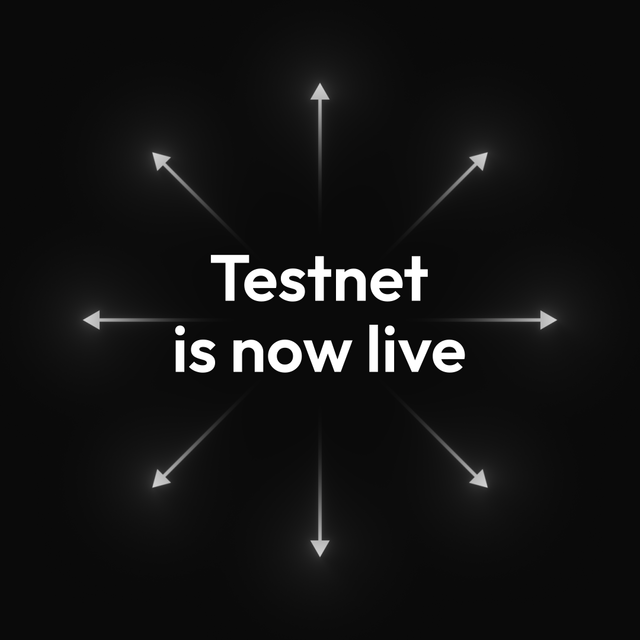How much has the Vasil upgrade improved Cardano?
On 22 September 2022, the IOG team announced the successful deployment of the Vasil upgrade. Thanks to the hard-fork combinator, the event took place without the need to stop the network and users did not even notice the change....

On 22 September 2022, the IOG team announced the successful deployment of the Vasil upgrade. Thanks to the hard-fork combinator, the event took place without the need to stop the network and users did not even notice the change. However, a major change in the Cardano network enhancement has occurred and users will sooner or later recognize it, mainly due to lower fees and higher network scalability.
TLDR
- Vasil started a new Babbage era and brought Plutus V2.
- Vasil upgrade reduced transaction fees by roughly 50% and transaction size by about 10x.
- Vasil confirmed the technological edge of the Cardano platform.
From the Alonzo era to the Babbage era
Before the Vasil upgrade, Cardano had the original version of Plutus platform V1 introduced in September 2021. It was the Alonzo era and it was possible to write and deploy Plutus scripts. The community has requested a few enhancements and in a tremendous collaborative effort of the developer community and the IOG team, a few Cardano Improvement Proposals (CIP) have been finished.
Vasil brought significant performance and capability enhancements to Cardano and introduces a new development era referred to as Babbage. The new era was named after Charles Babbage, the mathematician credited as “the father of the computer”. It was meant to smooth out any wrinkles that may be left over after Alonzo. The changes have been really significant and required developers' attention. That is why we talk about Plutus V2.
It is important to mention that the hard fork did not have an impact on already deployed applications. The Cardano network remains backward compatible and existing scripts (Plutus V1) can be executed as before. However, Plutus V1 scripts will be unable to make use of the new features, thus they remain less effective in comparison with Plutus V2 scripts. It can be expected that the majority of teams will upgrade their scripts in order to benefit from new features. It will most probably require new security audits.
Many teams have been preparing for Plutus V2 in advance, so they have their apps ready or will have them ready for the upgrade soon. Some projects were waiting for the Vasil upgrade because they wanted to run their application directly on Plutus V2. It didn't make sense to build it on Plutus V1. A new wave of applications for Cardano can be expected. It depends on the specific application how many changes need to be made and how complex they will be. Sometimes it may not be too laborious, on the other hand, in some cases, it may mean making major changes.
Biggest changes in Plutus V2
The Vasil upgrade improves the efficiency of the Cardano platform by leveraging the EUTXO model to create faster, more efficient, and more sophisticated applications. The biggest changes brought CIP-31, CIP-32, and CIP-33. The changes described below may be difficult to understand for ordinary users, so if you're one of them, it's okay if you don't fully understand them.
Reference inputs (CIP-31) enable on-chain data sharing. Before Vasil, datums were carried in transaction outputs to store and provide access to information on the blockchain. To access information in this datum, it was necessary to spend the output that the Datum was attached to. From the application perspective, it required the re-creation of a spent output. It cost fees and took space. The addition of reference inputs allows developers to look at the datum without extra steps. This facilitates applications to access information stored on the blockchain without the need for spending and re-creating UTXOs.
Transaction datums were previously attached to outputs as hashes. The original idea was that the hash has usually a lower size than user data. With the addition of inline datums (CIP-32), developers can create scripts with datums attached directly to outputs instead of using their hashes. This can simplify the usage of Datums for some applications and it is advantageous namely when data are small. A user can see the actual datum rather than supply it to match the given hash.
In Alonzo, when spending an output locked within a Plutus script, the script had to be included in the spending transaction. As a side effect, this increased the size of every transaction related to the application and also caused certain delays in their processing. The addition of reference scripts (CIP-33) allows developers to reference a script without including it in each transaction. This significantly reduces transaction size, improves throughput, and reduces script execution costs. It can be paid only once for the script and then just reference it which is cheaper.
What does Plutus V2 really bring to users?
As you can see, the developers had to consider whether to take advantage of the new possibilities offered by Plutus V2. I dare say that in most cases it is worth making changes in applications. The changes are mainly related to reducing the size of transactions. In the Cardano network you pay for the size of transactions, so reducing it means at the same time lower transaction fees for users. In a competitive battle, it is advantageous to keep fees as low as possible, so this forces developers to think about how to write a given functionality as efficiently as possible.
From a Cardano network perspective, Plutus V2 will increase scalability as more transactions can fit into a block. With the EUTxO model, a single transaction can contain as many as 1500 user requests. However, this does not mean that space cannot be saved through the use of references or a change in design. Users perceive blockchain networks (apart from the user interface of applications and wallets) mainly through the speed of transactions and their price. Higher scalability means there is a greater chance that your transaction will make it to the next block and not have to wait in the memory pool (mem-pool).
At the time of writing, we have data on how much the Plutus platform can be improved with the Vasil upgrade. Transaction fees are down by roughly 50% and transaction sizes have decreased by roughly 10x, judging by the information available on social media. Let's look at two specific cases.
The SundaeSwap team reported that Plutus V1 transactions had a size of 14.73 kB and a fee of 1.44 ADA. Plutus V2 transactions have a size of only 1.31 kB and the charge is 0.73 ADA.
The Artano team achieved even greater efficiency. Plutus V1 transactions were 6.5 and 7.8 kB in size within their NFT marketplace. The fees were 1.6 and 1.7 ADA. With Plutus V2 transactions, the size was reduced to 481 B (92%) and 570 B (92%), which reduced the fees to 0.39 ADA (77%).
As you can see, this is a fantastic efficiency boost. Ethereum switched from PoW to PoS literally days before the Vasil upgrade. I can't help but compare these two events, as it beautifully demonstrates Cardano's lead over Ethereum when it comes to technology. Ethereum "only" switched to PoS and nothing else changed in terms of fees or scalability (to be fair, block time is 12 seconds and is more reliable, which increases scalability). Cardano has had PoS for 2 years now, so the team can focus on what is most important from the users' perspective and what helps developers to create more efficient applications.
Greater scalability is not just about network consensus, but also about the many small details that make a big difference in the end. If I were to compare Ethereum and Cardano to building a house, I would say that the Ethereum team is still focusing on the rough construction, while the IOG team is dealing with insulating the building and heating.
Besides others, diffusion pipelining is a further improvement that is worth mentioning as it improves the network layer (which affects the performance of the consensus layer) and facilitates faster block propagation. It naturally opens the door for further increases in Cardano's performance and competitiveness as it is possible to increase block size or theoretically decrease block time.
Conclusion
With each upgrade, Cardano will move closer to becoming a global financial and social operating system. As such, it must remain inclusive. Decentralization must not be a privilege for the rich, and we must not discount its quality just because we cannot improve the technology. Even if the majority of the population will use second layers in the future, their quality and reliability will always depend on the first layers. Reducing transaction fees and increasing scalability will always make sense and teams will be working on this for the next decade.
Cardano can be upgraded without restarting the network. This is also important from the applications' point of view because if the network were to shut down forcibly during a traditional hard-fork, applications could get into unexpected states. Vasil's upgrade was one of the most challenging, according to the team. After several delays, Cardano entered the Babbage era. Best of luck to all the developers who can directly take advantage of all the features of the Vasil upgrade in their apps. Users will benefit from their good work.
Delegate Your Voting Power to FEED DRep in Cardano Governance.
DRep ID: drep12ukt4ctzmtf6l5rj76cddgf3dvuy0lfz7uky08jfvgr9ugaapz4 | We are driven to register as a DRep by our deep dedication to the Cardano ecosystem and our aspiration to take an active role in its development, ensuring that its progress stays true to the principles of decentralization, security, and community empowerment.DELEGATE VOTING POWER!








